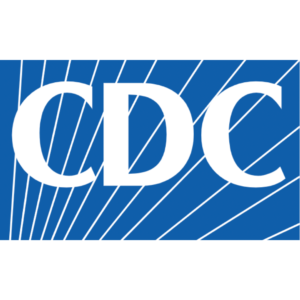CDC: Behavioral Approaches Matter When Building Vaccine Confidence
In the Dec. 13, 2022, Clinician Outreach and Communication Activity (COCA) call and slide set (beginning on slide 44), the Centers for Disease Control and Prevention (CDC) recommended that providers use a combination of three behavioral approaches to build and sustain vaccine confidence:
Presumptive
 “With all vaccines, CDC recommends giving a strong recommendation for vaccination using the presumptive approach,” said Richard Quartarone, BA, acting communication team lead for the Immunization Services Division at the CDC’s National Center for Immunization and Respiratory Diseases. “Taking this presumptive approach assumes that patients will be vaccinated. It opens that conversation—sets the point of view—and it is the most important part of the vaccine conversation.”
“With all vaccines, CDC recommends giving a strong recommendation for vaccination using the presumptive approach,” said Richard Quartarone, BA, acting communication team lead for the Immunization Services Division at the CDC’s National Center for Immunization and Respiratory Diseases. “Taking this presumptive approach assumes that patients will be vaccinated. It opens that conversation—sets the point of view—and it is the most important part of the vaccine conversation.”
In contrast, a participatory approach doesn’t assume that patients will be vaccinated. “It shifts all the responsibility to the patient [or family member],” explained Quartarone. Consider these two examples:
- In a presumptive approach, clinicians might say, “Your mother is due for her COVID-19 bivalent booster.”
- In a participatory approach, clinicians might ask, “Have you thought about your mother getting the COVID-19 bivalent booster?”
Presuming that someone will get vaccinated doesn’t mean being aggressive or forceful, added Quartarone. “It just creates the opportunity to have that conversation with a clear point of view. People are more likely to accept vaccines with a presumptive approach vs. a participatory approach. This is even true among individuals or groups that we might consider vaccine-hesitant or first-time patients.”
The key point is that “assuming hesitancy reinforces hesitancy,” said Quartarone. “The last thing that we want to do is create a situation where we are opening up mistrust or distrust of the system, whether it be the vaccine component or another component of the health system. When you set your point of view, … it’s in a calm, direct way. And typically, you get a reciprocal response. So, if somebody does express concerns or have questions, they appreciate the point of view, appreciate the openness, and you create an opportunity to build and strengthen trust.”
The CDC advocated using the SHARE process to deliver a strong recommendation to residents and families, which involves sharing the reasons why the vaccine is right for the resident, highlighting positive experiences with the vaccine to reinforce benefits, addressing questions and concerns, reminding residents that the vaccine helps protect them and their loved ones, and explaining the potential costs of getting COVID-19 without being up-to-date on vaccinations.
Motivational
“Motivational interviewing is just a really quick way to build trust,” said Quartarone. When residents or their families have concerns or questions about vaccination, motivational interviewing is an evidence-based and culturally sensitive way to speak with them. It involves four basic steps that can be completed in a few minutes, according to Quartarone:
- Be empathetic
- Ask permission to share more information about vaccines
- Apply interviewing techniques
- Respond to questions throughout the process.
Note: For a clear, concise explanation of how to implement these four steps, visit the CDC page Talking With Patients About COVID-19 Vaccination: An Introduction to Motivational Interviewing for Healthcare Professionals and then review slides 56 – 68 of the Dec. 13 COCA call slide deck.
Restorative
People have experienced many different types of trauma over the past few years, including individual trauma, trauma among family and friends, and community trauma. Trauma can affect both the ability to trust and decision-making, so the restorative approach takes the empathetic approach of motivational interviewing one step further to an almost trauma-informed approach, explained Quartarone.
Creating a restorative system involves the following, according to Quartarone:
- Building a safe environment (e.g., offering training to staff)
- Being trustworthy and transparent (e.g., talking about positives and then acknowledging that there might be some risks, no matter how small)
- Making the process collaborative (e.g., asking permission during motivational interviewing)
- Providing peer support (e.g., finding a way to identify shared experiences and opportunities to improve)
- Being thoughtful and understanding (e.g., recognizing and affirming the reality of any historical trauma or individual trauma that might have come from historical, cultural or gender-related aspects of certain policies).
“Those go a long way in diffusing situations and really opening people up to conversation,” he noted.
Specific restorative communication strategies include “speaking with a controlled, normal voice; creating a sense of calm; expressing kindness, patience, and acceptance; using engaging eye contact and positive body language; asking open-ended questions; and then respecting people’s personal space,” added Quartarone.
Note: Additional resources that may be useful include the following:
- “Overcoming Refusals” is a 3.5-minute highlight video from the Quality Innovation Network Quality Improvement Organization (QIN-QIO) Alliant Health Solutions that walks nurse leaders through common mistakes that staff make when offering COVID-19 vaccinations and booster and suggests simple strategies for improving uptake.
- “How to Increase Resident Booster Rates: Overcoming Family Objections to Another Shot” is a 38-minute webinar and slide set from Alliant Health that includes both information from a nurse who is leading vaccination efforts in her facility, as well as the perspective of a resident on how to improve uptake.

Caralyn Davis is a freelance writer specializing in the post-acute care sector. Email her at: caralynd@outlook.com.
Related Articles
Topics: Administration , Featured Articles , Training











